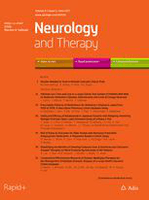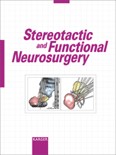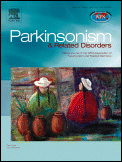
Brain Stimulation
Scope & Guideline
Connecting disciplines for a deeper understanding of brain function.
Introduction
Aims and Scopes
- Non-invasive Brain Stimulation Techniques:
The journal emphasizes studies on various non-invasive brain stimulation methods such as TMS, tDCS, and transcranial alternating current stimulation (tACS), focusing on their mechanisms, efficacy, and safety in clinical contexts. - Invasive Brain Stimulation Approaches:
Research on invasive techniques like deep brain stimulation (DBS) is highlighted, exploring their therapeutic applications in neurological and psychiatric disorders, and examining the neurophysiological effects of such interventions. - Clinical Applications and Outcomes:
The journal covers clinical trials and studies that assess the effectiveness of brain stimulation therapies in treating conditions such as depression, anxiety, PTSD, and other mood disorders, providing insights into patient outcomes and treatment protocols. - Mechanistic Insights and Neurophysiology:
Papers investigating the underlying neurophysiological mechanisms of brain stimulation, including synaptic plasticity, brain oscillatory dynamics, and connectivity alterations, are a key focus area. - Technological Innovations in Stimulation:
The journal also features research on novel stimulation technologies, including advancements in stimulation protocols, device designs, and methodologies for improving targeting and efficacy of brain stimulation.
Trending and Emerging
- Closed-Loop Stimulation Systems:
There is a growing interest in closed-loop brain stimulation systems that dynamically adjust stimulation parameters in real-time based on neurophysiological feedback, highlighting advancements in personalized and adaptive treatment approaches. - Neurobiological Mechanisms Underlying Stimulation Effects:
An emerging trend focuses on elucidating the neurobiological mechanisms of brain stimulation, including studies on synaptic plasticity, neurogenesis, and circuit-level changes in brain function following stimulation. - Combination Therapies:
Research exploring the synergistic effects of combining brain stimulation with other therapeutic modalities, such as cognitive-behavioral therapy (CBT) or pharmacotherapy, is becoming increasingly prevalent, reflecting a holistic approach to treatment. - Focus on Neuropsychiatric Disorders:
There is an increasing emphasis on the application of brain stimulation techniques specifically targeting neuropsychiatric disorders, including depression, anxiety, PTSD, and substance use disorders, indicating a shift towards addressing mental health issues comprehensively. - Technological Innovations in Stimulation Delivery:
Recent publications highlight advancements in stimulation delivery methods, including the use of high-definition tDCS, optimized coil designs for TMS, and novel ultrasound neuromodulation techniques, reflecting a trend towards enhancing the precision and efficacy of brain stimulation.
Declining or Waning
- Traditional Pharmacological Interventions:
There has been a noticeable decrease in studies focusing on traditional pharmacological treatments for neurological and psychiatric disorders, as the journal shifts more towards exploring non-invasive stimulation techniques as standalone or adjunct therapies. - Basic Animal Studies Without Translational Relevance:
The journal is increasingly favoring research with direct clinical implications, leading to a decline in purely basic animal studies that do not bridge to human applications or clinical outcomes. - Single-Session Stimulation Studies:
Research focusing solely on the effects of single-session stimulation without longer-term follow-up or repeated measures has diminished, as there is a growing interest in cumulative effects and longitudinal studies. - Non-Standardized Protocols:
The publication of studies utilizing non-standardized stimulation protocols is less frequent, indicating a shift towards more rigorous, standardized methodologies that enhance replicability and clinical relevance.
Similar Journals

Wiley Interdisciplinary Reviews-Cognitive Science
Unveiling innovative research in cognitive science.Wiley Interdisciplinary Reviews-Cognitive Science (ISSN: 1939-5078, E-ISSN: 1939-5086), published by WILEY, stands as a premier academic journal dedicated to advancing the understanding of cognitive science through an interdisciplinary approach. Since its inception in 2010, the journal has rapidly established itself as a leading source of knowledge, achieving a Q1 ranking in the 2023 category of Medicine, Neuroscience, and Psychology, underscoring its significant impact within these fields. With a Scopus ranking of #27 in General Psychology and #30 in General Neuroscience, it offers researchers, professionals, and students access to cutting-edge research that bridges various disciplines, fostering collaboration and innovation. Though not openly accessible, this journal is critical for those aiming to stay at the forefront of cognitive science research, providing comprehensive reviews that synthesize emerging findings and highlight future directions for study.

Research and Reviews in Parkinsonism
Advancing the frontier of Parkinson's research.Research and Reviews in Parkinsonism is an esteemed open access journal dedicated to advancing knowledge and understanding in the field of Parkinson's disease and related disorders. Published by DOVE MEDICAL PRESS LTD, this journal aims to disseminate high-quality research articles, reviews, and clinical studies that focus on innovative approaches to the management, treatment, and understanding of Parkinsonism. Since its inception as an open access journal in 2019, it has become a vital resource for researchers, clinicians, and students alike, facilitating the rapid exchange of information and fostering collaboration across multidisciplinary fields. With its commitment to enhancing the visibility and accessibility of research findings, Research and Reviews in Parkinsonism plays a crucial role in shaping the future of Parkinson's disease research globally. Readers can access the journal online, ensuring that vital information is readily available to all stakeholders in the healthcare community.

Journal of Neurorestoratology
Unlocking the future of cognitive restoration.The Journal of Neurorestoratology, published by TSINGHUA UNIV PRESS, stands as a pivotal resource in the evolving fields of neuroscience and rehabilitation. With focus areas encompassing cognitive neuroscience and neurological disorders, this Open Access journal, launched in 2013, fosters unimpeded global access to cutting-edge research and breakthroughs in neuro-restorative techniques and therapies. Although it is relatively new, it has demonstrated its potential impact within the academic community, ranking in the 51st percentile for Medicine _ Rehabilitation and contributing novel insights in the realms of speech and hearing, neurology, and cognitive neuroscience. With its commitment to disseminating innovative findings and promoting interdisciplinary collaboration, the Journal of Neurorestoratology plays a crucial role in advancing our understanding and management of neuro-rehabilitation, making it a valuable platform for researchers, healthcare professionals, and students alike.

JOURNAL OF PSYCHIATRY & NEUROSCIENCE
Unveiling Insights in Psychiatry and NeuroscienceJOURNAL OF PSYCHIATRY & NEUROSCIENCE, published by the CMA-Canadian Medical Association, serves as a pivotal platform for disseminating cutting-edge research in the fields of psychiatry and neuroscience. This esteemed journal, indexed with the ISSN 1180-4882 and E-ISSN 1488-2434, focuses on advancing our understanding of mental health through meticulous peer-reviewed articles, reviews, and clinical studies. With an impressive impact within the research community, it has achieved notable rankings, including Q1 in both Medicine (miscellaneous) and Psychiatry and Mental Health, as well as Q2 in Biological Psychiatry as of 2023. The journal fosters critical dialogue among scholars and practitioners by offering insights into the complexities of brain function and mental disorders, making it a fundamental resource for healthcare professionals, researchers, and students alike. Although it operates under a subscription model, its rich content continues to inform and influence the advancement of mental health science, affirming its role in bridging the gap between research and clinical practice.

Neurology and Therapy
Driving Progress in Neurology Through Collaborative ScholarshipNeurology and Therapy, published by SPRINGER LONDON LTD, stands as a pivotal platform for researchers and practitioners in the field of neurology and its therapeutic applications. This Open Access journal, active since 2012, facilitates the dissemination of innovative studies and cutting-edge findings aimed at improving neurological health. With an impressive ranking in the 2023 Scopus Rankings, where it holds a Q2 category in Neurology and a Q1 category in Clinical Neurology, it underscores its prominence in advancing neurological research. The journal's intriguing scope encompasses a wide-ranging exploration of neurological disorders, treatment methodologies, and healthcare strategies, making it a valuable resource for those vested in enhancing patient outcomes. With an appealing average impact factor, readers are encouraged to dive into the latest advancements and engage with the scholarly discussions that are shaping the future of neurology.

STEREOTACTIC AND FUNCTIONAL NEUROSURGERY
Advancing the Frontiers of NeurosurgerySTERREOTACTIC AND FUNCTIONAL NEUROSURGERY, published by KARGER, is a distinguished journal focusing on the evolving fields of neurosurgery and functional neurology. With its ISSN of 1011-6125 and E-ISSN of 1423-0372, this journal has been at the forefront of publishing innovative research since its inception in 1938, securing a prominent position within the scientific community through its commitment to high-quality peer-reviewed articles. As of 2023, it ranks in the Q3 quartile for Clinical Neurology and Q2 for Surgery, reflecting its impactful contributions and relevance to current medical practice. Researchers and practitioners alike will benefit from the journal’s exploration of novel techniques, therapeutic advancements, and clinical outcomes in stereotactic and functional neurosurgery, making it an invaluable resource for those aiming to stay abreast of the latest developments in this dynamic field. Although it does not currently offer open access, readers can access its content via institutional subscriptions, ensuring widespread dissemination of critical research findings aimed at improving patient care and advancing surgical methodologies.

PARKINSONISM & RELATED DISORDERS
Leading the way in Parkinson's research.PARKINSONISM & RELATED DISORDERS, published by Elsevier Science Ltd, is a prominent peer-reviewed journal dedicated to advancing the understanding of Parkinson's disease and related neurodegenerative disorders. With an impact factor placing it in the Q2 category across multiple fields including Geriatrics and Gerontology and Neurology for 2023, this journal serves as a crucial platform for researchers, healthcare professionals, and students alike. Covering an array of topics from clinical trials to innovative therapeutic strategies, it aims to disseminate valuable insights that can improve patient care and outcomes. While it remains a subscription-based journal, its relevance is underscored by its consistent rankings in Scopus, where it ranks 105th in Clinical Neurology and 35th in Geriatrics and Gerontology. Authored by top scholars in the field, PARKINSONISM & RELATED DISORDERS continues to contribute significantly to the body of knowledge surrounding these debilitating conditions, facilitating the exchange of cutting-edge research and fostering collaboration within the scientific community.

Tremor and Other Hyperkinetic Movements
Pioneering research for transformative clinical practices.Tremor and Other Hyperkinetic Movements is a pioneering open-access journal published by UBIQUITY PRESS LTD, dedicated to advancing the understanding of hyperkinetic movement disorders, including tremors. Since its inception in 2011, the journal has provided a vital platform for researchers, professionals, and students within the fields of neurology and movement disorders to share innovative findings, case studies, and clinical trials. With its contributions spanning from 2012 to 2024, the journal emphasizes high-quality research and fosters collaboration within the medical community. Although it holds a Scopus rank of 156 in the field of Medicine, particularly Cardiology and Cardiovascular Medicine, its value extends beyond metrics, inviting interdisciplinary dialogue about the mechanisms, treatments, and implications of these complex disorders. By offering unrestricted access to its content, Tremor and Other Hyperkinetic Movements ensures that crucial knowledge reaches a global audience, thus enabling advancements in clinical practices and improved patient outcomes.

Turkish Neurosurgery
Shaping the Landscape of Neurosurgery Through ResearchTurkish Neurosurgery is a distinguished journal published by the TURKISH NEUROSURGICAL SOC, dedicated to advancing the field of neurosurgery and clinical neurology. With an ISSN of 1019-5149 and converging its focus from 1990 to 2024, this regional journal aims to bridge the gap in knowledge dissemination within Turkey and beyond. It holds a notable position in the academic community, categorized in the Q3 quartile for both Neurology (clinical) and Surgery in 2023, illustrating its relevance in these critical fields. Although currently not an open-access publication, it offers insights and research findings that are vital for researchers, practitioners, and students who seek to stay abreast of developments in neurosurgical practices. Located in Ankara, Turkiye, Turkish Neurosurgery provides a platform for sharing rigorous research that enhances clinical outcomes and informs surgical techniques, thus playing a crucial role in elevating the standards of neurosurgery in the region.

Journal of Movement Disorders
Advancing knowledge in movement disorders.The Journal of Movement Disorders, published by the Korean Movement Disorders Society, is a premier open access journal dedicated to advancing the field of neurology with a specific focus on movement disorders. Established in 2008 and indexed with ISSN 2005-940X and E-ISSN 2093-4939, this journal plays a vital role in disseminating high-quality research and clinical insights to a global audience. With an impressive Q2 ranking in both Neurology and Clinical Neurology categories for 2023, the journal continues to feature innovative research articles that contribute to better understanding and management of various movement disorders. Ranked 104th out of 400 in Clinical Neurology and 54th out of 192 in Neuroscience, the Journal of Movement Disorders offers an essential platform for researchers, healthcare professionals, and students alike, fostering collaboration and knowledge exchange in a rapidly evolving field.